One of our core value adds here at J. Gibson McIlvain is that we know a LOT about wood. Every day we help our customers pick the best species for their project and advise on care, installation, and maintenance. Recently it seems one of our would- be customers decided to test us to see how good we really are.
It was a few weeks ago when one of the jolliest people you have ever heard called in. He stated that he had an exterior project he was building that would be subjected to all manner of weather conditions and massive temperature swings all in one night. He wanted the entire piece to be built from wood, some of it would be painted, some would be steam bent, and he was building the entire thing with hand tools. He was adamant that the species used be strong enough to take a beating yet very light weight. He went on to say that he has built this same project every year for as long as he can remember because it never holds up to the stresses of his “deliveries”. We tried to ask some questions about the nature of the project and what he was delivering but he was very evasive on this point. He said something about “believing is seeing”?
This was going to be a challenge but at the same time not knowing what he was building would give us the chance to examine strictly the demands to be placed on the wood and not let our decision be clouded by tradition. We asked a few more questions to qualify his statements and rank their importance. These were the conditions that we needed to satisfy:
- exterior grade with wide climate swings over a 24 hour period
- direct exposure to snow, ice, rain, heat, and humidity
- strong and resistant to great stress (hard landings, friction, “air pockets”??)
- good for steam bending
- Takes paint well but looks nice in a natural state and goes with red
- light weight (apparently, if the wood is heavier he has the ability to add more “thrust”)
So it was obvious to us that we were dealing with some kind of vehicle here and from the temperature, durability, and weight requirements we assumed he was building a wooden air craft of some sort. The steam bending thing was a bit different but I knew we could figure it out.
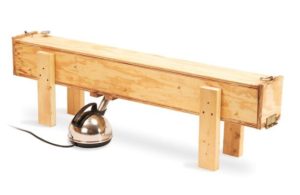
Though not first on the list, steam bending should be considered first. Kiln dried lumber is terrible for steam bending. The drying process will set the lignin fibers and they lose some elasticity. Green wood is best and air dried is a second choice. Straight grain is a big deal, too since any fibers that “run out” along the edge are prone to splintering during the bend. That being said we assembled a list of the species we can get green and air dried. Fortunately all of our domestic species are qualified for this as well as a few exotics. The best species to consider here would be an open pored wood that has some room for the compression that happens during bending. White Oak, Red Oak, and Ash come to mind, but Beech and Maple will also work despite their closed pore structure. Softwoods do not steam bend well at all so we need to avoid those.
The painting aspect is not a major concern as most woods will take paint readily and can always be prepped with a wash coat of an oil based or shellac based primer. Exotic woods can cause problems here with their abundance of natural oils so we are going to recommend a domestic species.
The biggest concern looks to be the extreme temperature and moisture changes. No wood is going to remain stable when the temperature and humidity rise drastically then plummet just as quickly. However wood that has been kiln dried will remain stable during quick climate changes. The heat of the kiln actually hardens the cell walls of the wood as it is baked and dried which means its sheds water like a dry creek bed during short spikes of humidity. Obviously with longer exposure the water will soak in and raise the moisture content and cause the wood to move. But this guy kept saying that the climate changes were quick. Using air dried or green wood shouldn’t be a problem however as long as we keep the wood in the bending forms and kiln dry it from there. The stuff that isn’t bent should be kiln dried so its important we supply both green and KD lumber and keep them separated and labelled as such for delivery.
The key with this weather variability here is to focus on a species that resists rot due to exposure to water. A good exterior species will stand up to the water and good construction techniques will take care of the movement issue. If we start with a green wood and build this vehicle using joinery that allows for freedom of movement and exploits the expansion and contraction of the wood to make the joints stronger then the temperature changes won’t be an issue. Mortise and tenon joinery using dry wood for the tenons and wet wood for the mortises will ensure that the mortise will shrink and the tenon expand forever locking the joint together no matter what the external moisture and temperature stresses will be. Additionally, pegs and wedges would be a good idea to provide a mechanical joint instead of relying on the friction and glue. If the wood is not water resistant however all bets are off.
I’m glad the light weight factor is last on the list because most of the lighter species are immediately disqualified do to their poor exterior ratings and inability to be bent. However, sticking with a domestic species means we will be somewhere in the 2.5 – 3.5 lbs/board foot range whereas most exotics can double that weight.
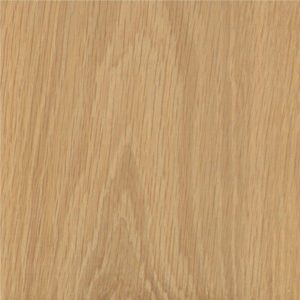
So…considering all of the above and factoring in a wood that is strong yet flexible to deal with stresses of flight and landing we come to Beech, White Oak, and Ash. All 3 of these look great with a natural finish and will complement his red paint job, too. However with the emphasis on extreme exterior exposure, White Oak is the only choice.
White Oak has an internal closed pore structure called Tylose that essentially dams up the cell walls either locking in or locking out moisture. This makes it highly water resistant. It is hard and very strong, yet the open grain makes it one of the best woods for steam bending. We can get it in any state from green to kiln dried very easily and the tree grows large and widespread so good length and width is available. When quartersawn the wood is very stable and highly attractive so we are recommending a percentage of quartersawn to the parts of this project that need to be most stable. We think that White Oak will handle every situation this customer can throw at it and to top it all off, it hand planes well and smells great while working it.
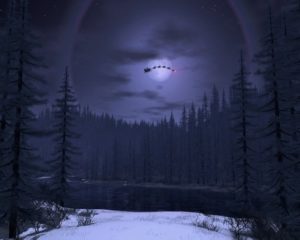
Anyway, Merry Christmas from all of us at J. Gibson McIlvain and bring us your tough wood selection problems. We live for this stuff!

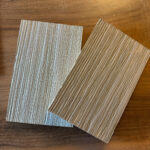
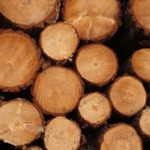
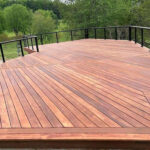
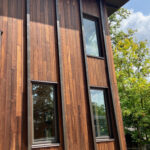
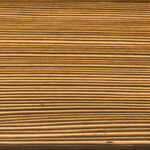
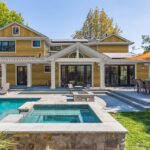


Glad you were able to help this fellow out.
Hopefully, he’ll be a jolly repeat customer.
Happy Holidays to all.
hmmm… I think some holly inlays would be a nice touch too.
Jonathan
======================================
Hilarious, Shannon! You really had me for a couple moments!